Good Doctor. Hot Infusion | Reprinted: Nanshi Hospital Conducts Celio-peritoneal Hyperthermic Perfusion Treatment
Intrapleural perfusion hyperthermia (IHP), as an innovative cancer treatment technology, is gradually demonstrating its unique advantages in the field of cancer treatment. In Nanyang's Grade-A hospital, Nanshi Hospital, a modern building where battles against disease are waged daily. The hospital's exterior is clean and orderly, silently conveying the professionalism of the medical staff and the hope of the patients.
2025-06-30
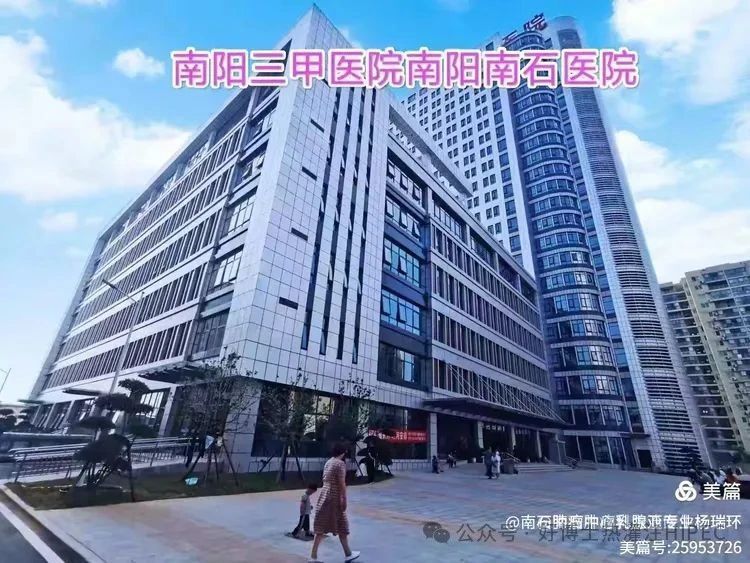
Thoracic cavity Hyperthermic intraperitoneal chemotherapy (Intrapeural perfusion hyperthermia, IHP), as an innovative cancer treatment technology, is gradually showing its unique advantages in the field of cancer treatment. In Nanyang's tertiary hospital, Nanshi Hospital, in this modern building, battles against disease are waged every day. The hospital's exterior is clean and orderly, silently conveying the professionalism of the medical staff here and the hope of the patients.
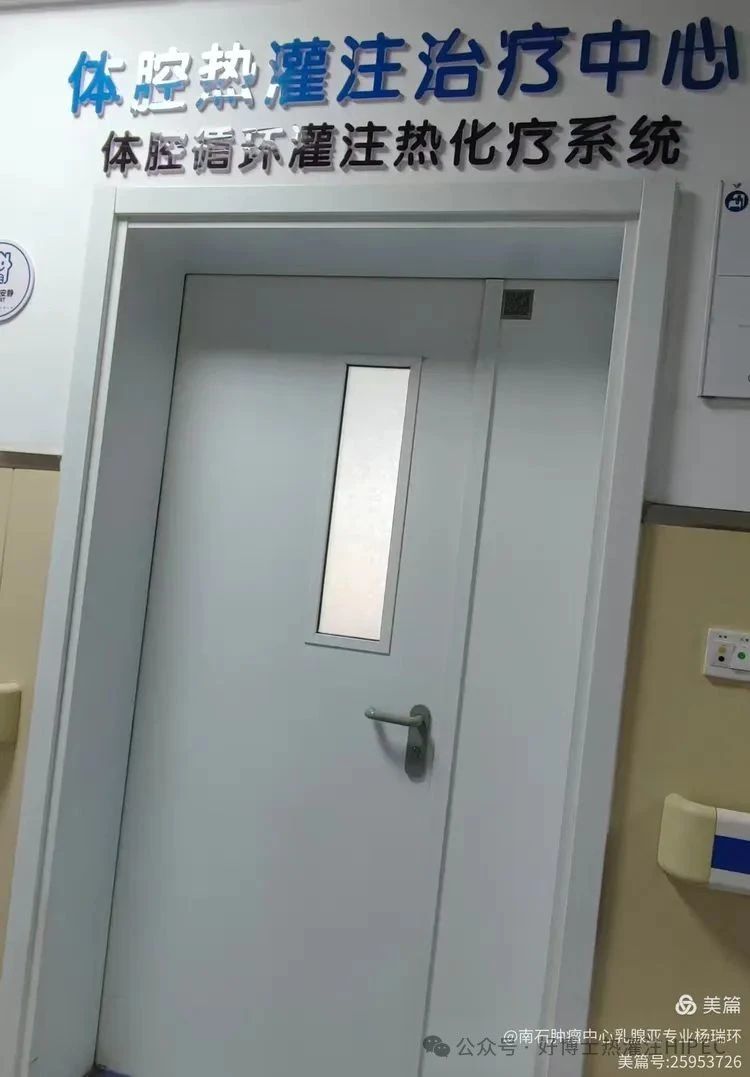
Thoracic cavity hyperthermic perfusion involves the use of a large volume of perfusate or perfusate containing chemotherapeutic drugs, heated to a certain temperature, then continuously, cyclically, and isothermally infused into the patient's thoracic cavity, maintaining the process for a certain period of time. This technology combines the dual effects of hyperthermia and chemotherapy, aiming to utilize the difference in temperature tolerance between normal tissues and tumor cells to kill tumor cells while avoiding damage to normal tissues. The thermal effect directly kills tumor cells and induces their apoptosis; chemotherapeutic drugs enhance the killing effect on tumor cells; mechanical flushing removes residual cancer cells and micrometastases in the body cavity. In Nanshi Hospital's body cavity hyperthermic perfusion treatment center, this technology is bringing new hope to countless patients.
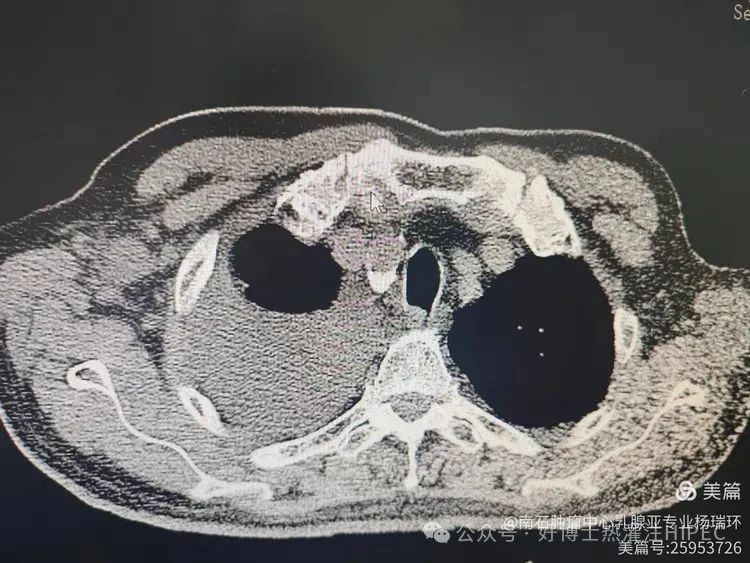
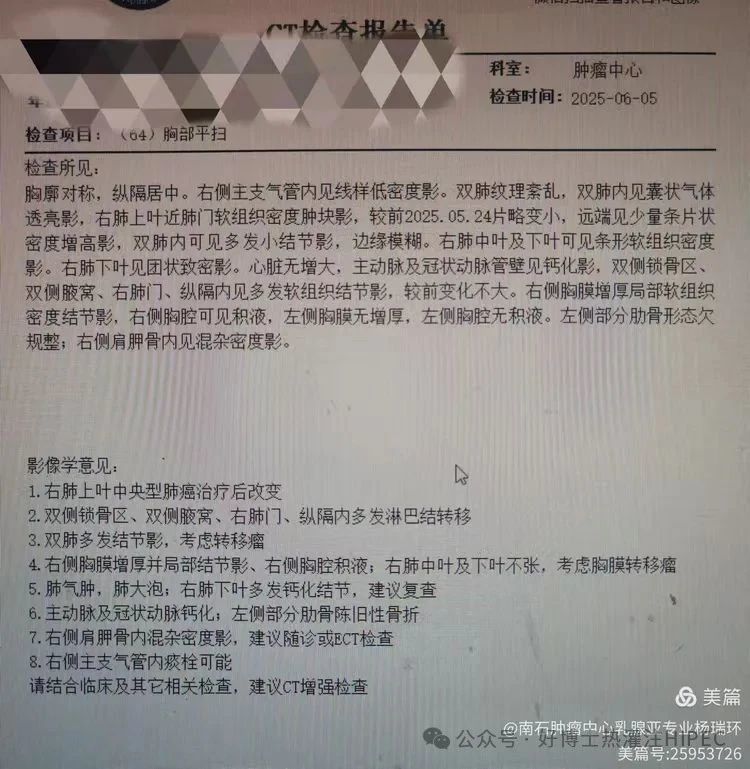
For a patient with advanced cancer combined with pleural metastasis , a large amount of pleural effusion caused significant atelectasis, causing significant symptoms in the patient. The medical team at Nanshi Hospital quickly formulated a treatment plan and decided to use thoracic cavity hyperthermic perfusion treatment. Through CT scan images, the doctors clearly saw the lesions in the lung area, providing precise guidance for treatment.
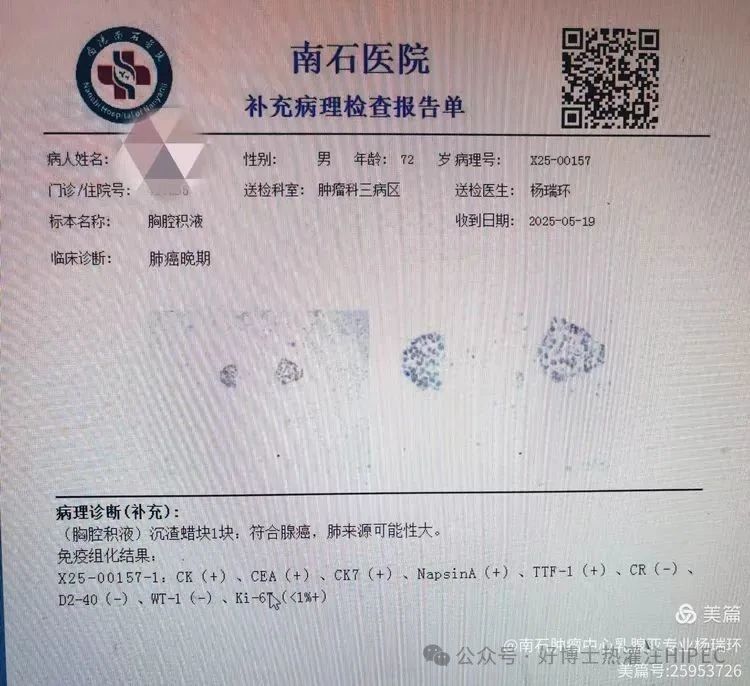
The pathological examination report showed that cancer cells were found in the pleural effusion, and the immunohistochemical results supported the diagnosis of lung adenocarcinoma. This further confirmed the severity of the patient's condition, and the malignant pleural effusion strengthened the medical team's determination to use thoracic cavity hyperthermic perfusion treatment.
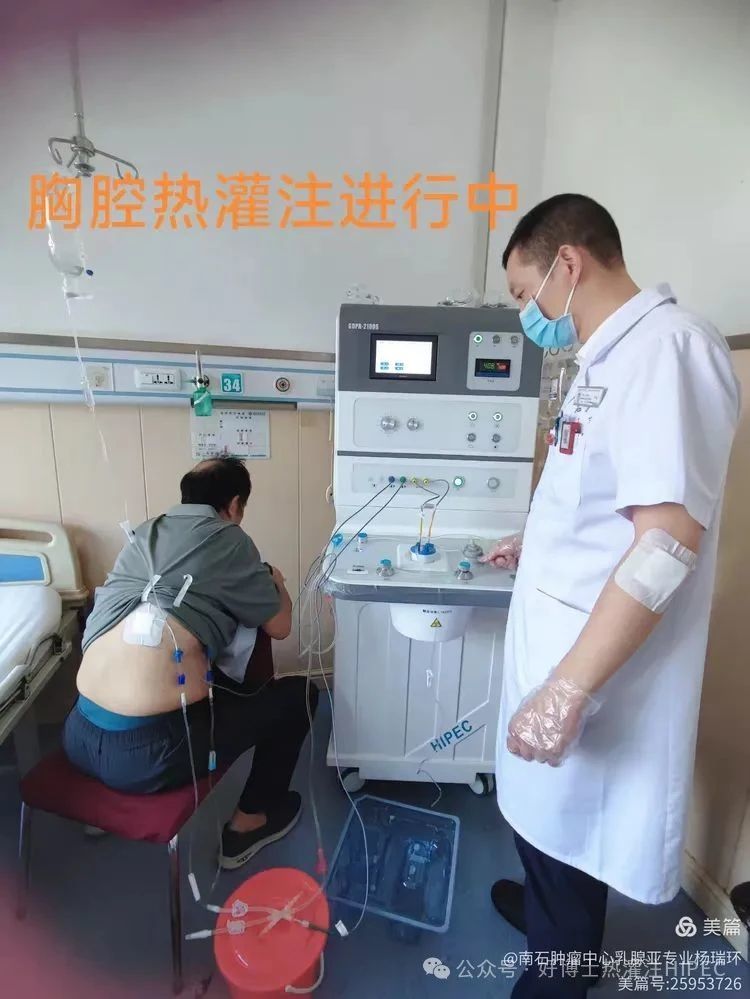
After repeated communication with the patient and family about the changes in the condition and the meaning and risks of treatment, the medical team obtained the consent of the patient and family and began thoracic cavity hyperthermic perfusion treatment. In the ward, the doctors operated the medical equipment and provided professional nursing care for the patient, with every step being rigorous and meticulous.
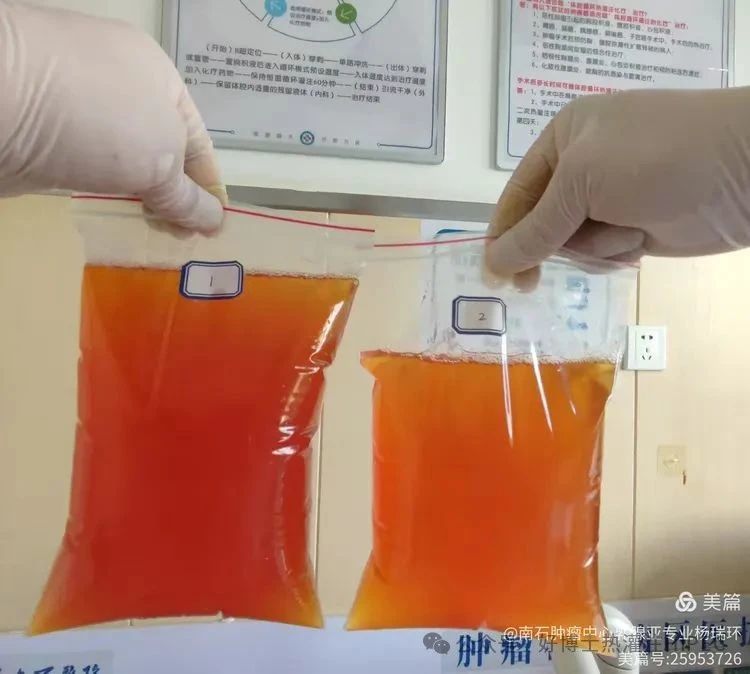
After preheating, the treatment began with single-item drainage, and the dynamic changes in the color of the pleural effusion were clearly visible. From the first bag to the second bag, the color gradually lightened, which is not only a change in the liquid but also a glimmer of hope for the patient.
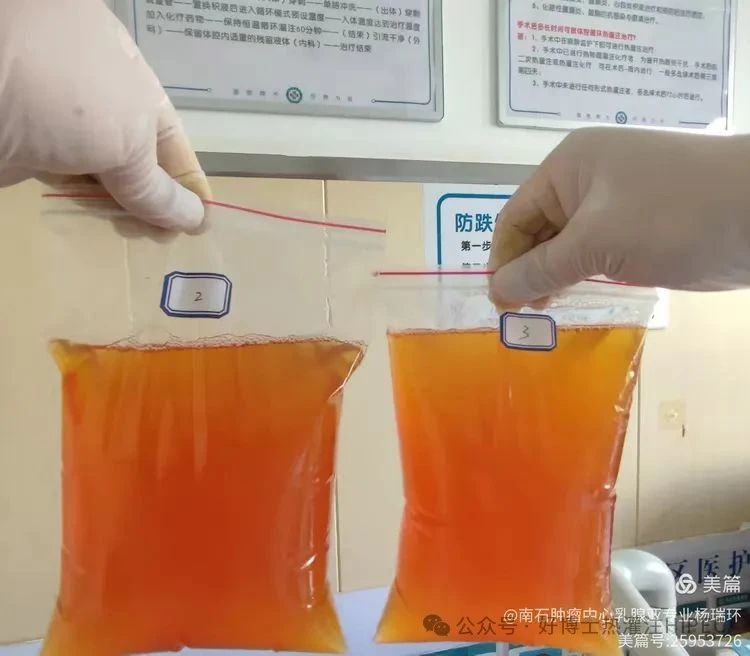
As the treatment progressed, from the second bag to the third bag, the color continued to lighten, and the treatment effect began to show. Medical staff wearing white gloves operated large bags filled with orange liquid, every movement filled with respect for life.
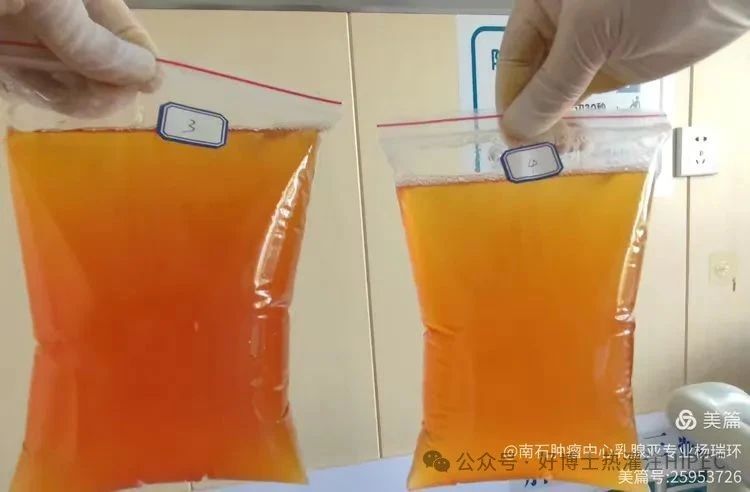
From the third bag to the fourth bag, the color became lighter and lighter, the treatment process was stable, and the patient had no significant discomfort. The numbered bags showed the progress of the treatment and also recorded the patient's recovery journey.
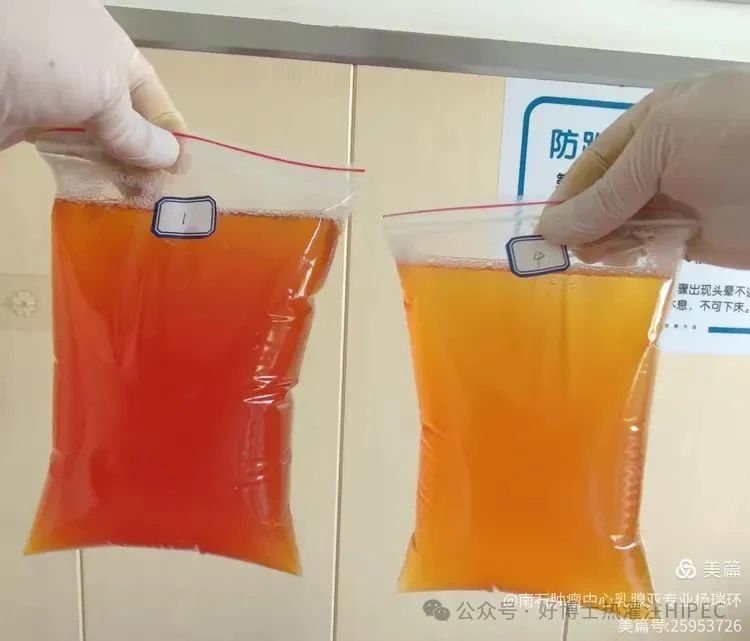
From the first bag to the fourth bag, the color change was significant, and the treatment effect was significant. The orange-yellow liquid samples in the transparent plastic bags are not only a testament to the treatment but also a continuation of the patient's life.
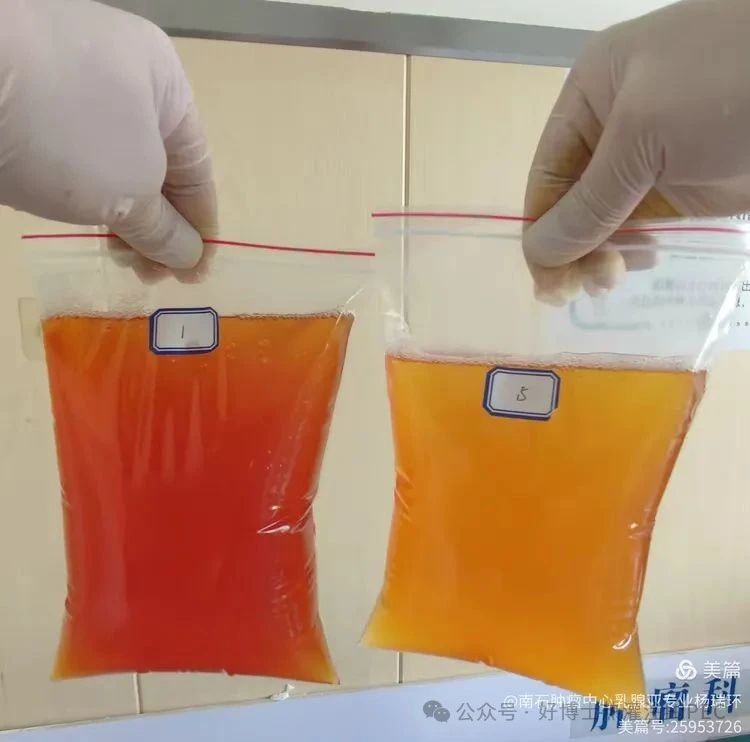
From the first bag to the fifth bag, the color became lighter and lighter, and the treatment effect was significant. Every change in color is a protection of the patient's life.
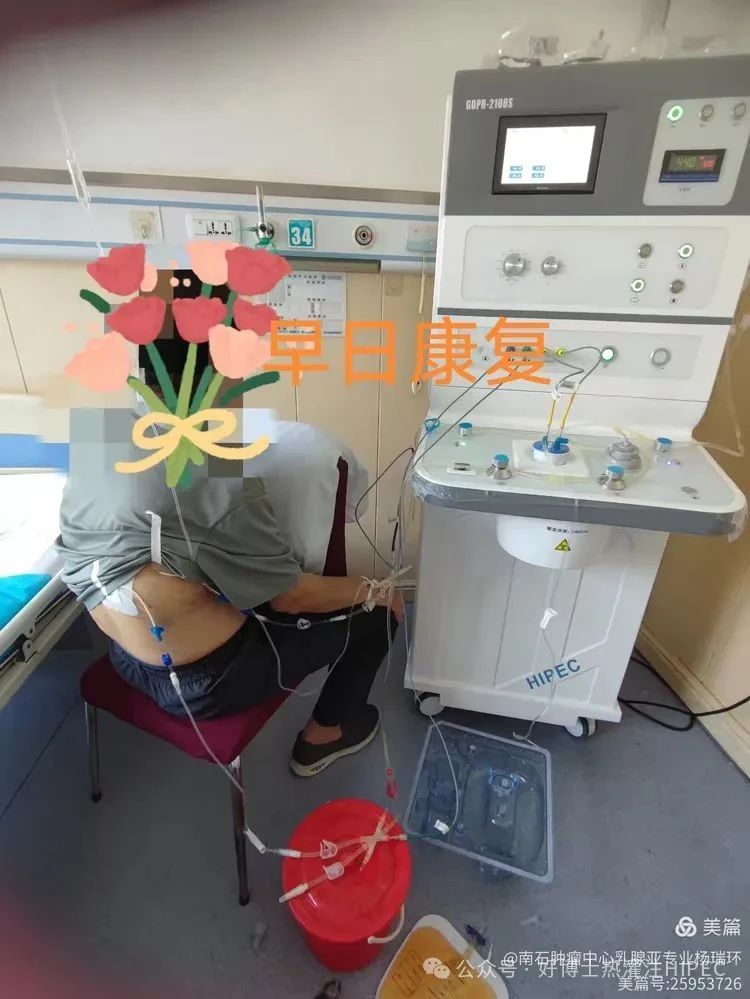
After the drainage was completed, the perfusate and chemotherapeutic drugs began to circulate and flush, the whole process was stable, and the patient had no significant discomfort. Wishing the patient a speedy recovery.
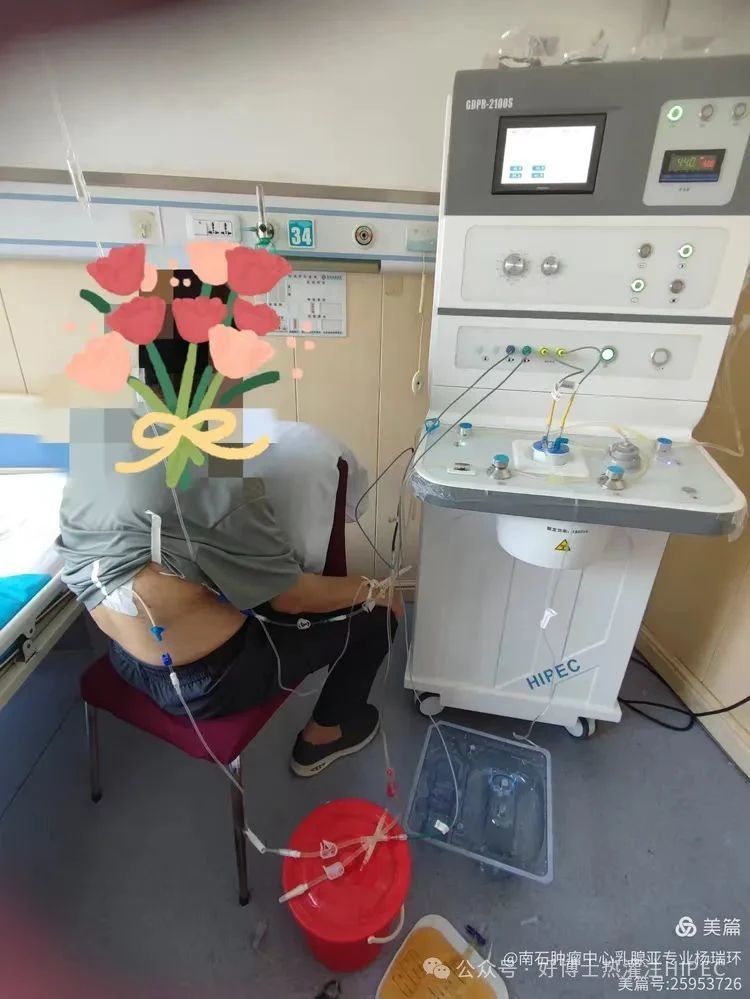
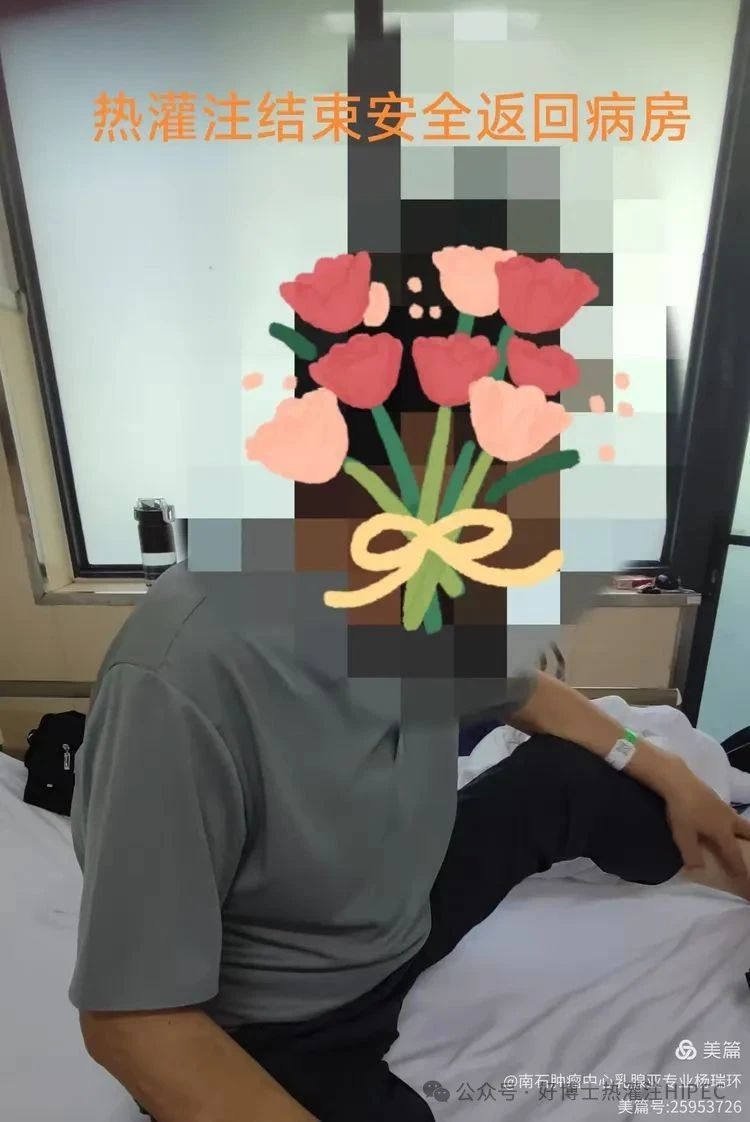
After the perfusate circulation was completed, the remaining chemotherapeutic drugs were given for thoracic cavity perfusion, the tube was sealed, the patient safely returned to the ward, and the changes in the condition were continuously monitored.

Dr. Yang Ruihuan, from the breast cancer sub-specialty of the Nanshi Hospital Tumor Center, has more than ten years of clinical experience and is proficient in radiotherapy, chemotherapy, targeted therapy, immunotherapy, and local perfusion therapy for tumors. Her professionalism and patience have brought hope to countless patients.
Key words:
Related News


